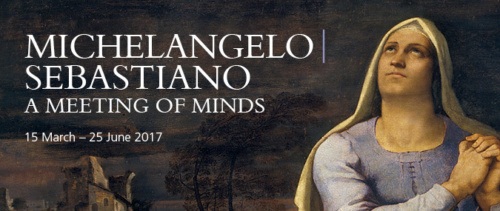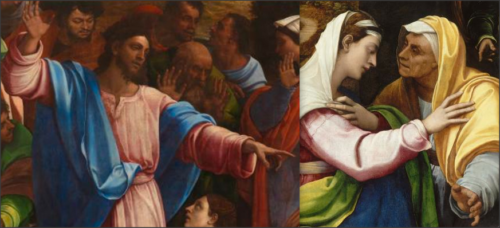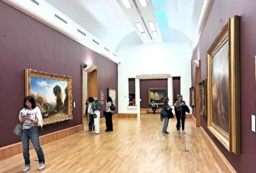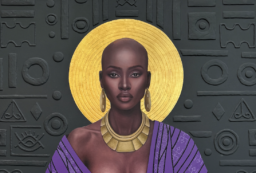Michelangelo was already scaling the heights of High Renaissance painting and sculpture and engaged in a rivalry with Raphael when he met Sebastiano in Rome in 1511 and took him under his tutelage. They met while Michelangelo was working on the Sistine Chapel vaults 1508-1512, establishing the Mannerist style which would dominate Italian art. The two would have a 25-year friendship which included collaborations on masterpieces such as The Raising of Lazarus and the constant sharing of study notes. By the time of Raphael’s death, Michelangelo had steered him to become Italy’s foremost artist.
Much of these study notes of the human form are also on display, giving an insight into the methods of the master and his meticulous approach. This is the feature that set the two apart: Michelangelo’s precision against Sebastiano’s more improvised, vigorous style which emerged from the Venetian Schools. In one of his paintings, Virgin and Child with St John and Angels, part of the image is exposed, the paint scraped away to show the study lines underneath.
However, one can also see that Sebastiano was certainly as detail orientated in some respects since many of the displayed figurative studies are attributed to him. The Studies on Reverse of Pietra (1512) include preparatory markings by both as they collaborated on this notable commission for San Francesco in Viterbo (1512-16).
The most magnificent and monolithic of all paintings displayed is not a Michelangelo, surprisingly enough, but, certainly, one influenced by the master. He passed his study notes on to Sebastiano for The Raising of Lazarus so that his protege’s work would surpass his great rival Raphael’s painting of the Transfiguration.
In this painting, although Sebastiano’s highly saturated Venetian style is evident in the high-key lighting of the Sistine Ceiling, you’ll also notice the red garments in Christ’s robes now the palest pink hue and the blues similarly desaturated. Michelangelo’s dramatic, idealised Mannerist-style prominent throughout, showing his indomitable influence on the major court and papal commissions of the age.
Sebastiano also delights in more modest emotive creative elements shown in his triptych The Visitation. These three paintings show Elizabeth, mother of John the Baptist meeting Mary mother of Christ. With this depicted in the late hours, there is an overall dusky bronze-gold tonality even in their complexions, making them appear Middle Eastern (which they are) or even African in colour rather than the milky, moon-pale tones associated with idealised religious paintings with later periods. The silvery filters of the moon, though, are evident in the overall lighting values of the piece, perhaps emphasising the moon light of the late hours. The dimmed lighting of the exhibition room underscoring this dusky atmosphere.
Sebastiano again steals the stage with the Borgherini Chapel Project carefully laid out in one of the penultimate gallery spaces as a piece de resistance for visitors almost out the door. This was commissioned by one of Michelangelo’s wealthy banker acquaintances Pierfrancesco Borgherini and shows two Christs: the first his flagellation and the second as the resurrection. It is based on a prophetic Messianic text called the Apocalypsis Nova which foresaw the second coming of a great Anglican Pastor to wipe away universal sin.

Michelangelo & Sebastiano, The National Gallery (Adults £16 Students/Jobseekers £9)





